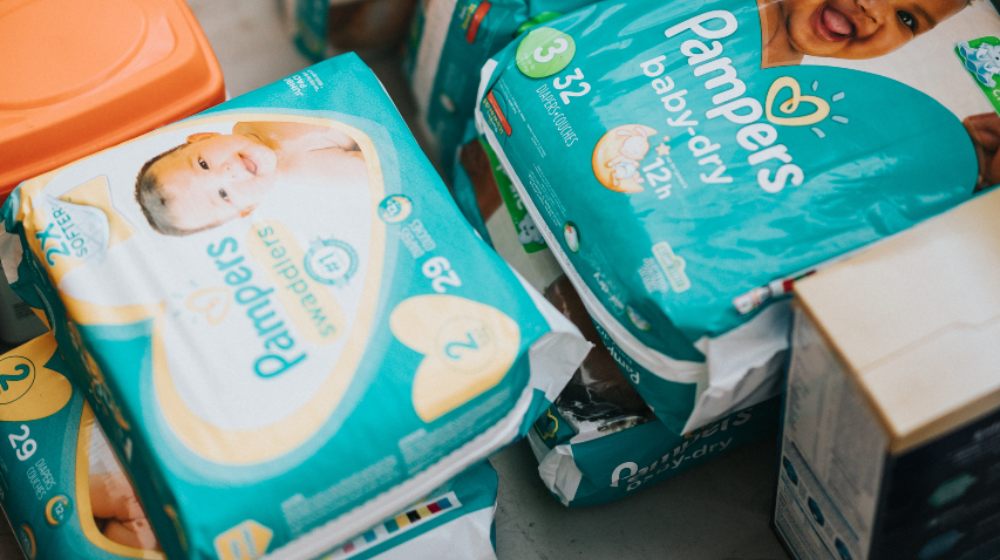Business
Procter & Gamble To Raise Prices By September

The company joins a number of consumer-products firms, including rival Kimberly-Clark, that announced price increases this year. P&G said that this initial increase covering specific products can act as the starting point for broader increases.
RELATED: US Made Capital Goods and Shipments Unexpectedly Fell in February
Procter & Gamble To Raise Prices
Procter & Gamble cited rising costs for raw materials such as resin and pulp and higher expenses to transport goods as the main drivers for their price increases.
“This is one of the bigger increases in commodity costs that we’ve seen over the period of time that I’ve been involved with this, which is a fairly long period of time,” said COO Jon Moeller.
P&G is improving its products so that consumers will feel they are getting more even with the price increases. Scheduled for September, the increases will apply to baby products, adult diapers, and feminine-care brands. Specifically, the increase rates will stay in the mid-to high-single-digit percentage points, the company said.
The last time big consumer-products firms raised prices significantly was in 2018. Surging pulp prices drove up the cost of diapers, toilet paper, and other products.
Lower Rate of Organic Sales
The price increase followed the announcement of P&G’s latest financial results. In the quarter ending March 31 this year, organic sales grew by 4%.
This is the company’s lowest increase since 2018. In contrast, 2020’s lockdowns created a strong demand for toilet paper, paper towels, and cleaning supplies.
During the previous quarter, P&G’s net sales rose 5% to $18.1 billion, even as volume became flat for the first time in years. The company posted P&G posted a net income of $3.27 billion, or $1.26 a share. This is up from $2.92 billion, or $1.12 a share, a year earlier. Proctor and Gamble blew away analyst predictions of $3.09 billion.
“It’s a different situation as everywhere in the world countries are in very different places as far as coming out of the pandemic.
There is very strong consumption across the board,” Moeller said. While sales are cooling for some products, demand is recovering for others, such as beauty products and supplies sold directly to businesses.
Pandemic Disruptions
Since last year, the pandemic disrupted major supply chains throughout the world. This year, more external events added to the struggle. The Texas freeze last February caused a number of chemical plants in the area to shut down.
Consequently, this led to shortages in raw materials that in turn sent prices for polyethylene, polypropylene, and other chemical compounds soaring.
Other Companies to Raise Prices As Well
P&G’s rival Kimberly-Clark said its percentage increases are in the mid-to high-single digits and will take effect by late June. Increases will affect the company’s baby- and child-care, adult-care, and Scott bathroom tissue businesses. Kimberley-Clark is the maker of Huggies diapers and Scott paper products.
Several food makers have raised prices as well. Hormel Foods Corp. said in February that it raised prices on its turkey products, such as Jennie-O ground turkey, in response to higher grain costs. J.M. Smucker Co. said it recently raised prices for its Jif peanut butter and that it might do the same with pet snacks because of higher shipping costs and other inflationary pressure.
CPI Jumped 2.6% in March
Meanwhile, the US Labor Department said last week that its consumer-price index climbed 2.6% in the year ended March, the biggest 12-month increase since August 2018. The CPI measures what consumers pay for everyday items, including groceries, clothing, recreational activities, and vehicles.
Watch the Yahoo! Finance video report where Procter & Gamble COO Jon Moeller discusses the company’s decision to raise prices in September:
Have you felt the increased prices in consumer goods since last year? Did it affect your spending habits or patterns?
Share with us your experiences in buying essential items during the pandemic. Share your comments below!



